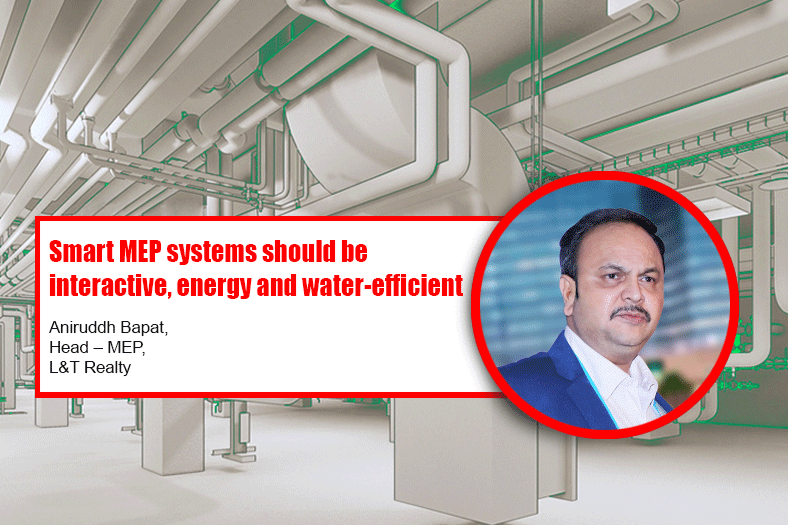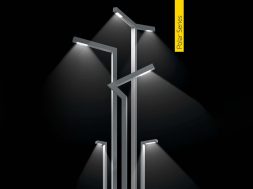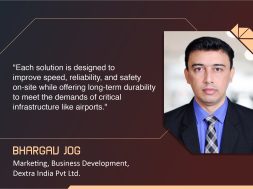Smart MEP systems should be interactive, energy and water-efficient

They also have to be futuristic, scalable and environmentally friendly. For example, we select DG, chillers, facades, STPs, mass transport systems that fulfil these criteria, says Aniruddh Bapat, Head – MEP, L&T Realty.
There is a consensus that smart cities require MEP systems which are incredibly sophisticated, can you tell us more?
I would like to put it differently. For smart cities, we need a robust MEP system that can talk to the BMS/Server through IOT sensors. Today, even retrofit solutions are available which can make your existing MEP equipment smarter. There are a lot of digitization efforts in terms of BIM modelling and usage of MEP software/tools for the implementation of load calculations, air distribution, as well as hydraulic systems, are put in. The estimation required for the electrical equipment such as DG set, transformers, cables and their load calculations, switch gears for several multistoried complexes are attained by the MEP software easily.
The precise estimate of water capacity, number of pipe fittings, sizes of the pumps, the calculation related to the estimation of the waste system, rainwater harvesting and firefighting system etc. are the functioning of the MEP design and planning section, which are an integral part of smart city infrastructure. A truly objective MEP system delivers the requisite finest indoor environment quality after making the residents more comfortable and healthy at the minimum economic and environmental account.
What kind of products and technology will be required to address the MEP challenges in Indian smart cities?
We require smart MEP systems which are interactive, energy and water efficient, futuristic and scalable. They have to be environmentally friendly. For example, we select DG, chillers, facades, STPs, mass transport systems that fulfil these criteria.
Maximum harvesting of daylighting, rainwater are the key features to implement. The town planning, roads and flyovers infra have to be designed in such a way that it promotes walk to work concept, decentralization of business districts. A balance between urban and rural development shall bring the required harmonious development.
Can you cite an example of an existing smart city where such products have been utilized to good effect?
I refer to the survey carried out by the American Society of Mechanical Engineers (ASME) and McKinsey on the world’s top smart city wherein London, New York and Singapore figure out prominently and they all top on the following eight generally recognized subjects that combine to make a city smart:
• Mobility
• Healthcare
• Security
• Water
• Energy
• Engagement and community
• Economic development and housing
• Waste
These subjects are having a large influx of MEP systems to make them happen.
Cookie Consent
We use cookies to personalize your experience. By continuing to visit this website you agree to our Terms & Conditions, Privacy Policy and Cookie Policy.









